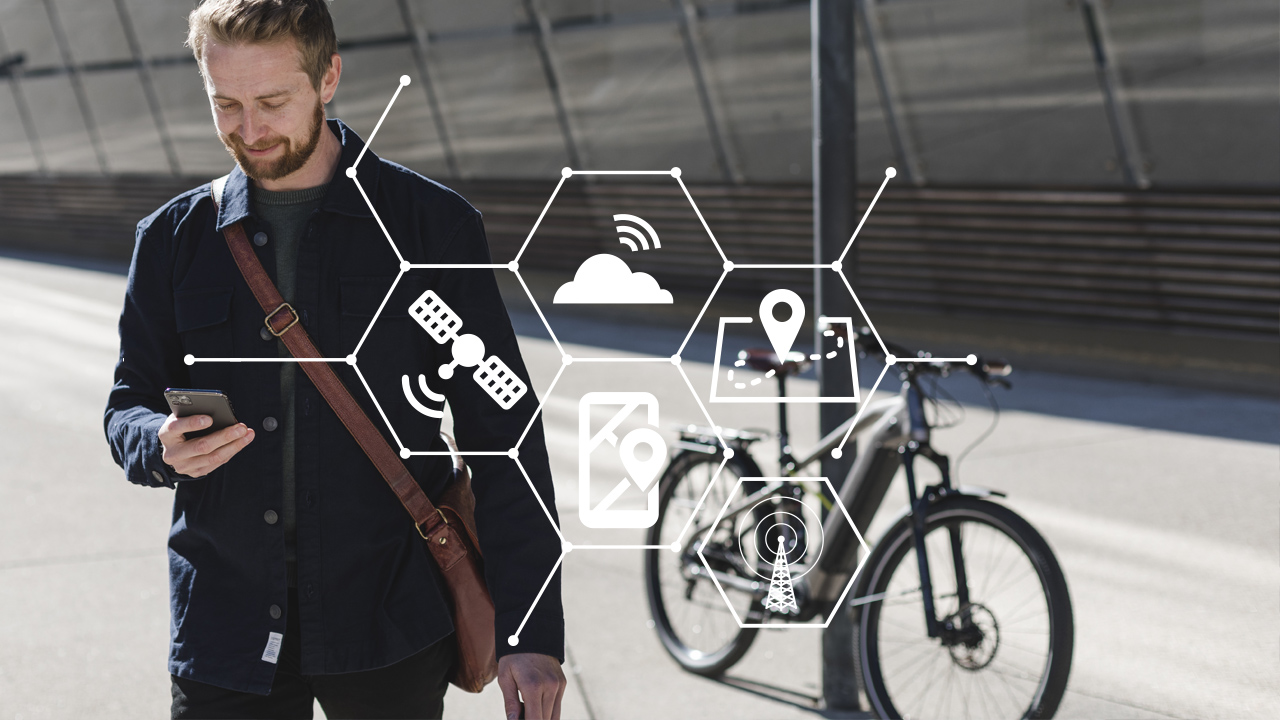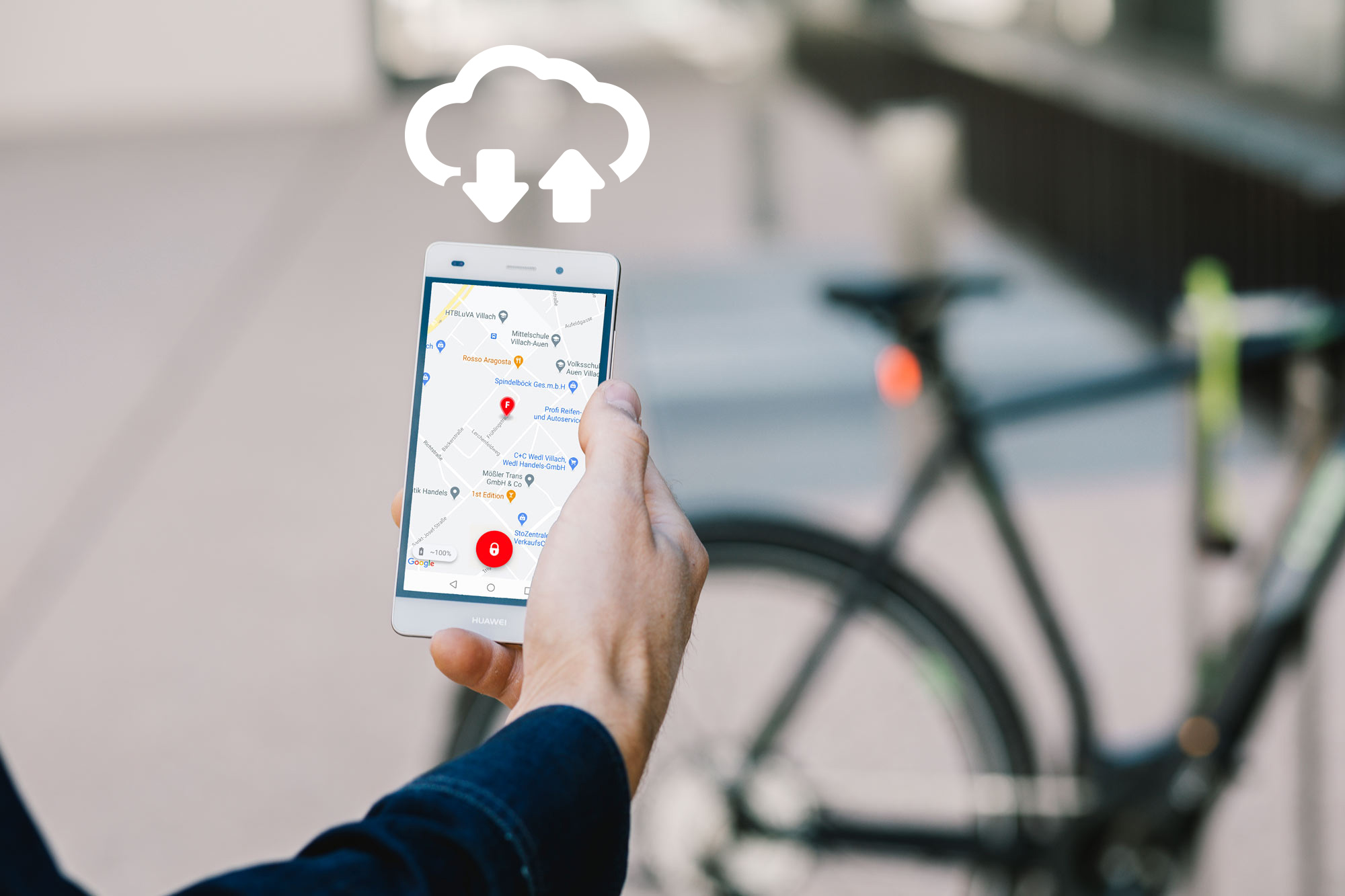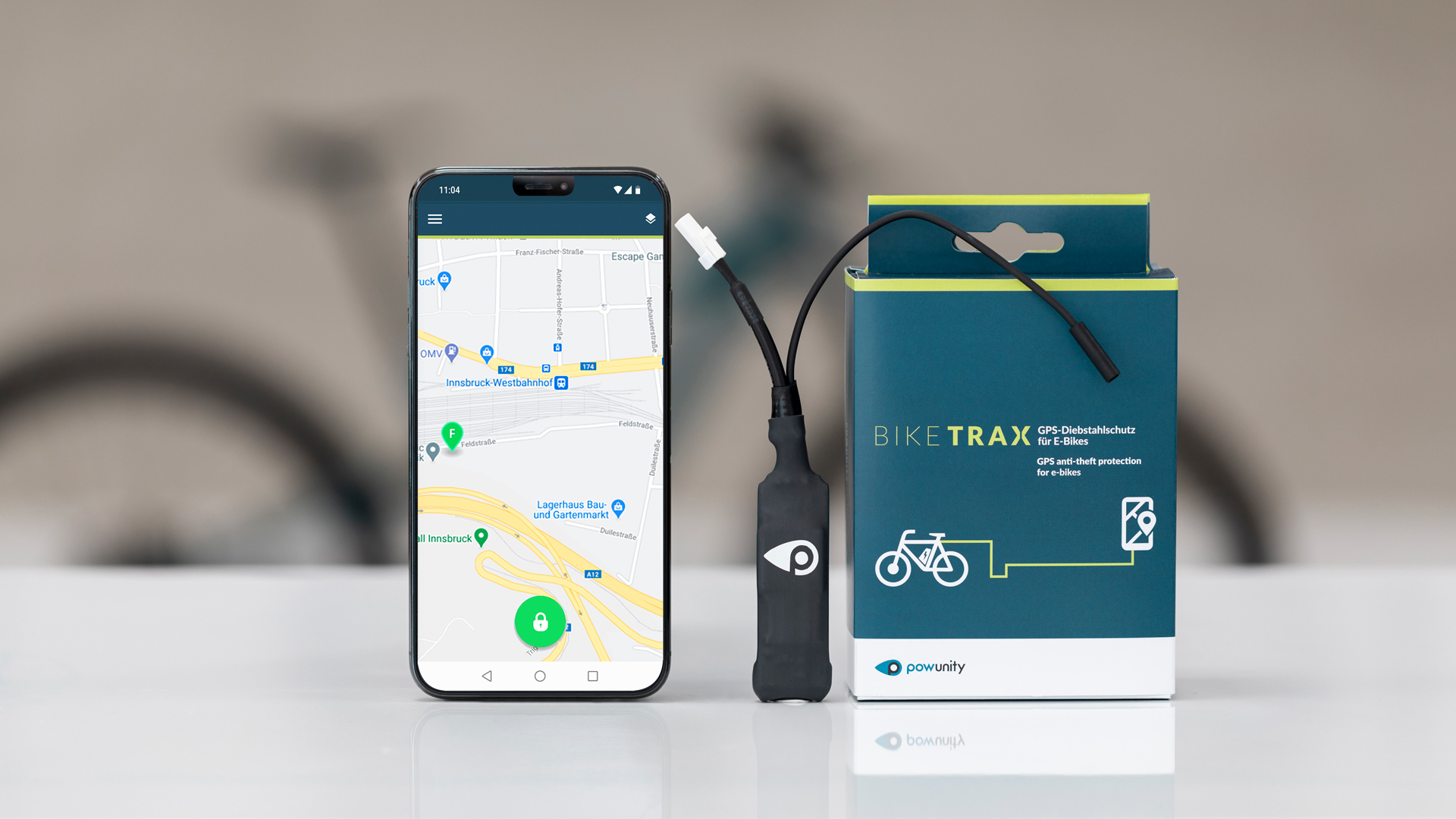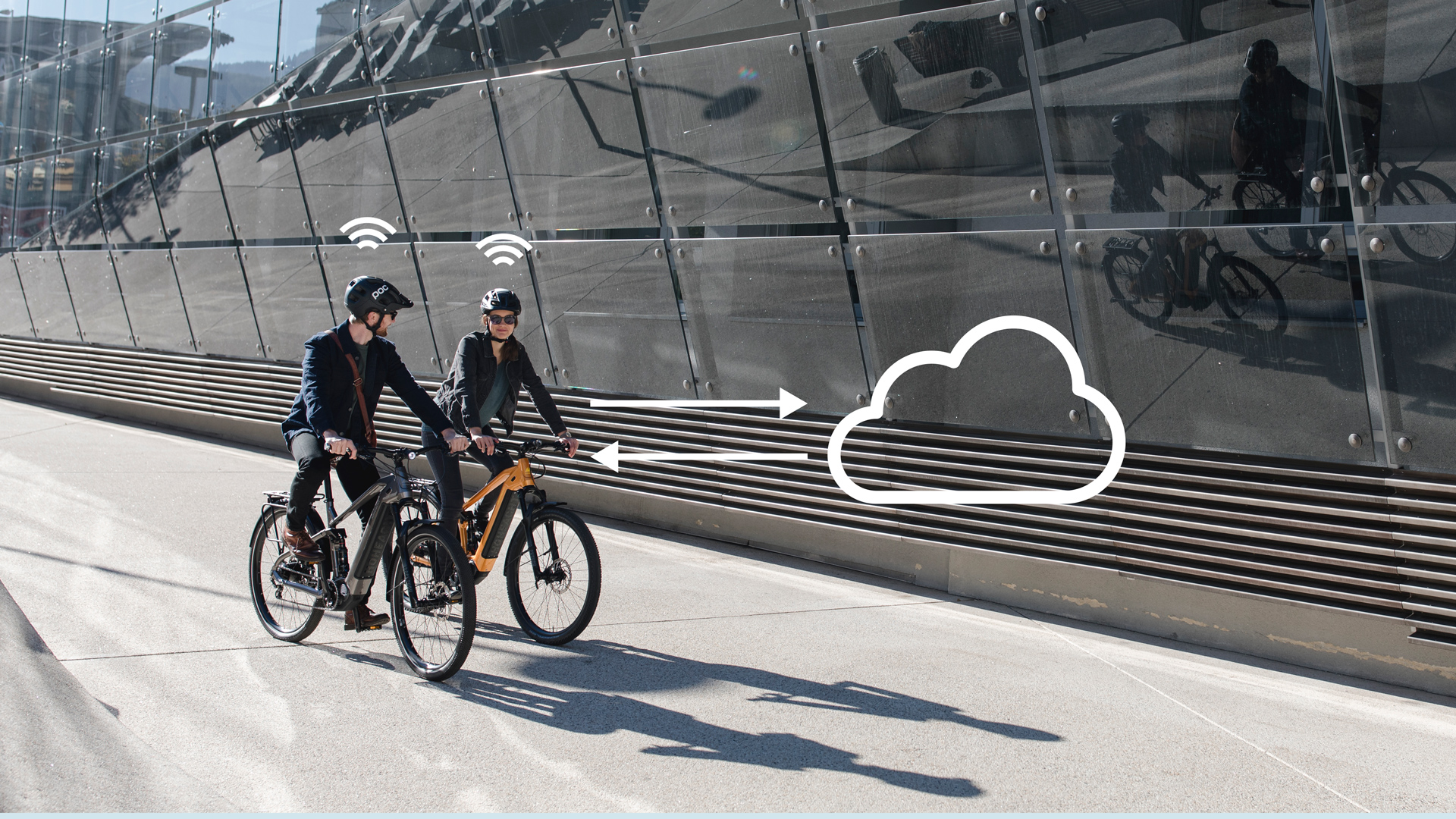- Free shipping from 220€The order of accessories (without BikeTrax) is excluded from the free shipping costs.
PowUnity explains, Top, Topics
Smart electric bike – how digitalization is revolutionizing e-bikes
Inhalt
About Smart E-Bikes in a nutshell
- The name “smart e-bike” is widely used. However, there are still few e-bikes that really exploit the possibilities of digitalization.
- We can only speak of a smart e-bike when sensors and digital components are linked in the e-bike that exchange data with a smartphone or server and this data is used for theft protection or predictive maintenance, for example.
- Smart e-bikes have many advantages: These include the fact that data exchange improves the user experience, for example during training. With GPS trackers such as BikeTrax from PowUnity, you also benefit from highly efficient theft protection.
E-bikes are an expensive investment. That’s why their owners usually want
- them to last a long time,
- them to provide the greatest possible benefit or maximum riding enjoyment, and
- the best possible protection against thieves.
Digitization opens up new possibilities in all 3 areas, but previous e-bikes have hardly taken advantage of them – not even those marketed under the dazzling term “smart e-bike”. It is only in the recent past that trends towards smart electric e-bikes worthy of the name have become apparent. What technologies are behind them and what “smart” means in this context, you can find out in the following.
Digitization of the smart ebike
First, a basic question: What does progressive digitalization mean in relation to bicycles or e-bikes?
The key factors in this context are
- the rapid further development of smartphones into small high-performance computers with a lot of computing power
- the availability of data that can be read out by means of sensors and micro-chips that can be built into e-bikes.
- increasing possibilities to network objects with current radio standards, whether 5G and LTE- for long distances or Bluetooth Low Energy for short distances.
All these developments are closely linked to the Internet of Things (IoT). This means that physical objects are connected to each other, exchange data and, in part, perform actions on their own based on this data. A well-known example of the Internet of Things are smart home applications such as heaters that automatically adjust their temperature to the outside temperature.
Would you like to learn more about the Internet of Things? You can find out details about the technology behind it and which areas of application it has in our article “Internet of Things, bikes, and GPS tracking: the future is connected!”
How an e-bike becomes a smart electric bike
From the previous explanations it is already clear: to make an e-bike smart, it is not enough to give it an on-board computer and a sleek design.
Instead, a true smart e-bike fullfils four prerequisites:
- Sensors and digital components are integrated in the e-bike (for example, acceleration sensor, rev counter, temperature sensor or air pressure sensor).
- These can be connected to a smartphone via app or a server/”the cloud”.
- The digital components in the e-bike and the server/the cloud as well as the smartphone exchange data.
- The data collected by the sensors is used, for example, for theft protection or predictive maintenance.
Only when these requirements are met can one speak with a clear conscience of a smart bike.
A good example of a smart e-bike application is anti-theft protection via a GPS tracker. The position of an e-bike can be monitored in real time.
By the way: The smart e-bike we are talking about here has nothing to do with the “Smart” ebike that Daimler launched on the market a few years ago, which was characterized above all by a powerful motor and a futuristic design.
Excursus – smart bikes need electricity
Smart e-bikes have only existed since e-bikes have been around.
Why? Quite simply.
Both the collection of data via sensors and the exchange of data between components, systems and servers need electricity. But only e-bikes have the necessary power on board through their battery, unlike classic bicycles.
The potential of smart e-bikes – applications at a glance
1. Durability
Every e-bike, smart or not, consists of numerous wearing parts, from front and rear brakes, the light, the wheels, and gears to the drive, the rims or the power battery. Careful maintenance plays a decisive role in ensuring that these wearing parts function for longer. This also increases the overall service life of your pedelec.
Genuine smart e-bikes support maintenance by continuously collecting data on the condition of your e-bike and making it available to you, for example on the
- battery charge level,
- the condition of the brakes, chain or motor, or
- tyre pressure.
With the help of this data, you can prevent accidents or breakdowns and carry out maintenance work, repairs or replace wear parts at an early stage.
There is also an additional bonus: you are more relaxed. After all, you don’t have to constantly check the condition of your bike. You also don’t have to worry as much about overlooking a defect and having the brakes fail on the next downhill ride.
E-bike fleet operators benefit especially from smart e-bikes
E-bike fleet operators, for example e-bike rental companies or delivery services, sometimes manage thousands of bikes. For them, it is particularly important to stay up to date on the condition of their bikes.
In this context, data exchange via smart e-bikes has the following advantages:
- It significantly reduces the maintenance effort.
- The automatic data collection facilitates management.
- The collected data provides new insights into the riding behaviour of customers or employees.
As a result, fleet operators benefit from high savings and a system that constantly optimises itself. Sometimes smart technologies even make new services possible.
2. More benefits in daily use
The data exchange in a smart e-bike can increase the riding pleasure and improve the user experience in several ways.
- Route tracking: Smart systems save routes ridden on demand, without you having to press start or stop. This feature can be used for a logbook at work as well as for a private overview.
- Display of CO2 savings: Display how much CO2 you have saved because you have ridden routes with the pedelec instead of by car.
- Adaptation to heart rate: You want the motor to kick in only on uphill gradients? With a smart e-bike, you can set a heart rate that should not be exceeded.
- Intelligent route planning: If you pair your smartphone via app with a smart e-bike, you can have routes displayed that are adapted to the battery power level of your bike.
- Support for the purchase decision: If you want to trade in your current e-bike for a new one, a saved ride profile will help you find a suitable successor – no need of further assistance.
- Sharing your location: With the help of IoT and GPS, you as a rider can share your current location at any time. This is especially useful for older people who often ride their pedelec alone.
3. Protect your e-bike from theft
We have already mentioned this: Because of their high price, e-bikes are coveted by bike thieves. A good lock is important, but it will only protect your e-bike from experienced thieves to a limited extent. The situation is different if you upgrade your bike with a GPS tracker for theft protection. Then it is even protected if thieves hijack it in a van.
Excursion: Bluetooth or GPS – how components and servers communicate on a smart e-bike
Digital components of an e-bike can communicate with a server or the cloud in two ways.
- Bluetooth: A Bluetooth module is integrated into your smart e-bike, which connects to your smartphone app. The smartphone in turn connects to the server or the cloud.
- GPS tracker: Communication takes place via a GPS tracker on the e-bike. This can be compared to a modem that collects all the data from sensors and the like, “packages” it and transfers it to a server or the cloud.
One advantage of GPS trackers is that all services also work when your smartphone is not connected to the e-bike or when you and your e-bike are many kilometres apart. This is a decisive advantage in the case of theft.
How theft protection works with GPS trackers
Good GPS trackers for bicycles or e-bikes allow you to track the location of your bike at all times via app. In case of a theft attempt, a movement alarm is transmitted to your smartphone app. If you arrive too late to prevent the theft, you can transmit the live location of your bike directly to the police via the tracker app. The police can then arrest the thieves and recover your bike.
The reactions of bicycle insurance companies show how efficient such modern theft protection is. Even today, you can benefit from reduced premiums if you have a GPS tracker. In the future, the devices could even be a condition for signing a contract.
Put a stop to bicycle theft. For expert tips on how to protect your e-bike, you can read our article “7 expert tips on how to ensure electric bike security”.
The smart e-bike is still young
Smart systems for e-bikes that increase durability, improve ease of use and the riding experience, as well as protect against thieves, are a comparatively new phenomenon.
It is true that the term “smart e-bike” or “smart pedelec” has been used diligently for several years. But the development of really smart systems for bikes with motors is only just beginning in 2021. This is also due to the fact that the e-bike industry is young. Manufacturers were initially busy optimising other areas such as the range of batteries, motor torque or the initially somewhat clunky design of their bikes. Smart or not smart was not the decisive question in this situation, nor was it a purchase criterion.
But in the meantime, e-bikes have come a long way.
This means that the next big evolutionary leap is now upon us:
- extend the service life of e-bikes
- increase the benefits and enjoyment of the bike
- Making e-bikes theft-proof
Clear the stage for the smart e-bike:
Important: Not all smart bikes are the same – tips for buying a smart bike
If you want to buy a real smart e-bike, be careful. Because if the marketing departments of e-bike manufacturers have their way, the market is teeming with smart pedelecs.
But the fact that an e-bike and smartphone can be connected is not yet smart.
You can only talk about a real smart e-bike or smart pedelec when digital components such as sensors collect data and these data are processed and transported via a server/the cloud and the smartphone in such a way that you as the rider benefit from them.
Also note: Many new manufacturers who cleverly advertise a “smart e-bike” place emphasis on a sleek frame design and unusual features that seem interesting at first glance but are of little use at second glance. The e-bike itself is often of significantly lower quality than a comparable bike from established companies. So there is a risk that you will buy an e-bike that is neither smart nor particularly good.
PowUnity is a specialist for e-bike IoT solutions
Looking for a company that knows about smart e-bikes? PowUnity has focused from the beginning on developing a GPS anti-theft protection specifically for e-bikes. We know our customers, their biggest pain points and their wishes, because our support team has bikers on the phone every day.
All the learnings that we take away in direct customer exchanges is packed into a smart IoT system based on an integrated GPS tracker and a Bluetooth Energy module. Together with e-bike manufacturers, we develop smart e-bike solutions that are really smart. Today, the scope of this cooperation already ranges from simple GPS tracking solutions to fully comprehensive smart e-bike IoT solutions, including a manufacturer’s own white-label app for operating their e-bikes.
Share article!










 Deutsch
Deutsch